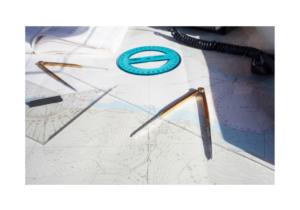Jun 18, 2021Calculating Depreciation: Which Method is Best?
When a business makes a large purchase or acquires a new asset, it must consider how to write off the purchase for tax purposes each year. Since these assets retain value for over a year, they can be written off on tax forms in increments over several years rather than all at once. In order to know how much can be written off each year, businesses can calculate how much value an asset decreases—or depreciates—over time, using either the straight-line depreciation method or double declining depreciation method.
Straight-line Depreciation
The straight-line depreciation method allows for a fixed rate of depreciation over a period of time, meaning a business writes off the same amount on their taxes each year. To calculate the straight-line depreciation, businesses need to know the total purchase price of the asset—including shipping, taxes, and fees—its salvage value, and the useful life of the asset—an estimate on how many years the asset will continue to be useful to the business. With these three numbers, businesses can then calculate the straight-line depreciation expense of the asset:
annual depreciation expense = (purchase price - salvage value) / useful life
If a business buys a company car for $30,000, and they estimate reselling it for $10,000 in five years, they would calculate the annual depreciation expense in the following way:
(30,000 - 10,000) / 5 = $4,000
In this example, the car’s depreciation expense is $4,000/year for five years. If a business needs a monthly depreciation expense, it would simply divide the yearly depreciation expense by twelve.
Double Declining Depreciation
Unlike the straight-line depreciation method, double declining depreciation allows businesses to write off most of the depreciation expense in the years shortly after an asset’s purchase, which means that the business will be writing off different amounts each year. To calculate the double declining depreciation, businesses will need to calculate the basic depreciation rate and the book value of the asset. To calculate the basic depreciation rate, find the basic depreciation expense and then divide it by the purchase price:
Basic depreciation expense / purchase price = basic depreciation rate
For the example of the company car, the basic depreciation expense can be calculated by dividing the purchase price by its useful life: 30,000 / 5 = 6,000. Then divide the basic depreciation expense by the purchase price to find the basic depreciation rate:
6,000 / 30,000 = .2
(Alternatively, calculate the basic depreciation rate by simply dividing 1 by the useful life of an asset: 1/5 = .2 ) With the basic depreciation rate, continue with the rest of the double declining depreciation formula:
(2 x basic depreciation rate) x current book value
It is called double declining depreciation because it doubles the depreciation rate (by multiplying it by 2) before multiplying it by the current book value to determine the depreciation expense. In the first year after an asset’s purchase, the book value will be the same as the initial purchase price. In each subsequent year, the asset’s book value will decrease depending on the amount the item has depreciated since its purchase. Using the example of the $30,000 company vehicle, this is how the business would calculate their depreciation expense in the first year after purchase:
(2 x .2 ) x 30,000 = 12,000
Using the double declining depreciation method, the company vehicle’s depreciation expense after the first year will be $12,000 versus the $4,000 provided by the straight-line method.
Benefits and Drawbacks
When considering which method to use, businesses must consider the asset in question as well as the resources at their disposal. While the straight-line method is easier to calculate due to its predictability each year, using the double declining method can more accurately represent the declining value of an asset. To help with making these decisions, here is a simple list of each method’s benefits and drawbacks:
| Benefits | Drawbacks | |
| Straight-line | Easy calculations | Less accuracy |
| More predictable | Less money back up front | |
| Fewer errors | ||
| Double Declining | Greater accuracy | Complicated calculations |
| More money back early on | Less predictable |
Ultimately, businesses need to determine which method would be best for them depending on the type of asset and resources available to make these calculations.









